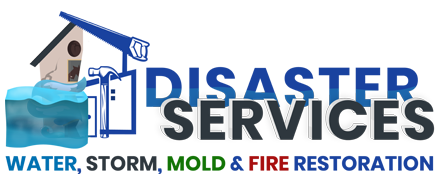Mold is more than just an unsightly issue in homes and buildings, it can also pose serious health risks and structural problems. That is why understanding the processes of mold cleaning, abatement, removal, and remediation is essential. Today, Disaster Services would like to go into how these services work to ensure a safe, healthy, and mold-free environment.
Basic Facts Aout Mold
Mold is a type of fungus that can grow indoors and outdoors, thriving in moist, warm conditions. It reproduces through spores that can be airborne, making it easy for mold to spread quickly. When it grows indoors, it can cause health problems such as allergies, respiratory issues, and can even exacerbate asthma.
Mold Assessment & Inspection
The first step in addressing a mold problem is a thorough assessment and inspection. Professionals will inspect your property for visible signs of mold and use tools to detect hidden mold. This step is critical to understand the extent of the mold problem and the best course of action.
Mold Cleaning & Abatement
• Mold Cleaning: This is often the first step in the remediation process, particularly for smaller areas of mold. It involves cleaning mold from surfaces using specialized cleaning agents. This process doesn’t address the root cause of the mold but is effective for minor issues.
• Mold Abatement: This refers to the process of reducing mold levels or mold spores to normal, natural levels. It includes cleaning, but it also involves addressing the source of moisture that allows mold to thrive.
Mold Removal Treatment & Remediation
• Mold Removal: This involves physically removing all mold from the affected areas. In cases where mold has deeply infiltrated certain materials, such as drywall or insulation, these materials may need to be removed and replaced.
• Mold Remediation: This is an ideal approach that involves not only removing the mold but also restoring the affected area to its original condition. Remediation includes identifying and correcting the moisture source, isolating and containing the mold, air filtration, removing mold-infested materials, cleaning, and drying the area, and performing necessary repairs.
Mold Safety & Prevention Measures
Professionals involved in mold remediation wear protective gear such as gloves, goggles, and respirators to protect against mold exposure. The affected area is usually sealed off with plastic sheeting to prevent mold spores from spreading to other parts of the building. After the remediation, preventive measures are crucial. This includes fixing leaks, ensuring good ventilation, controlling humidity levels, and routine inspections to catch potential mold growth early.
Why Professional Mold Services are Essential
Mold remediation can be complex and hazardous, especially for extensive infestations. Professionals have the training, experience, and equipment necessary to tackle the problem safely and effectively. They ensure that the mold is not only removed but that steps are taken to prevent its return.
Flood & Water Damage Restoration, Mold Remediation in Baytown, Pasadena, Humble, Deer Park, Crosby, Channelview, League City, Pearland, Missouri City, Sugar Land, Cypress, The Woodlands, Spring & Greater Houston, Texas
Mold cleaning, abatement, removal, and remediation services are vital for maintaining a healthy living environment. These services not only address the immediate issue of mold but also work to prevent future growth. By understanding the differences and importance of each step in the mold remediation process, homeowners and property managers can make informed decisions to protect their properties and the health of their occupants. When you discover mold in your home and need professional help reclaiming your home, contact Disaster Services today.





